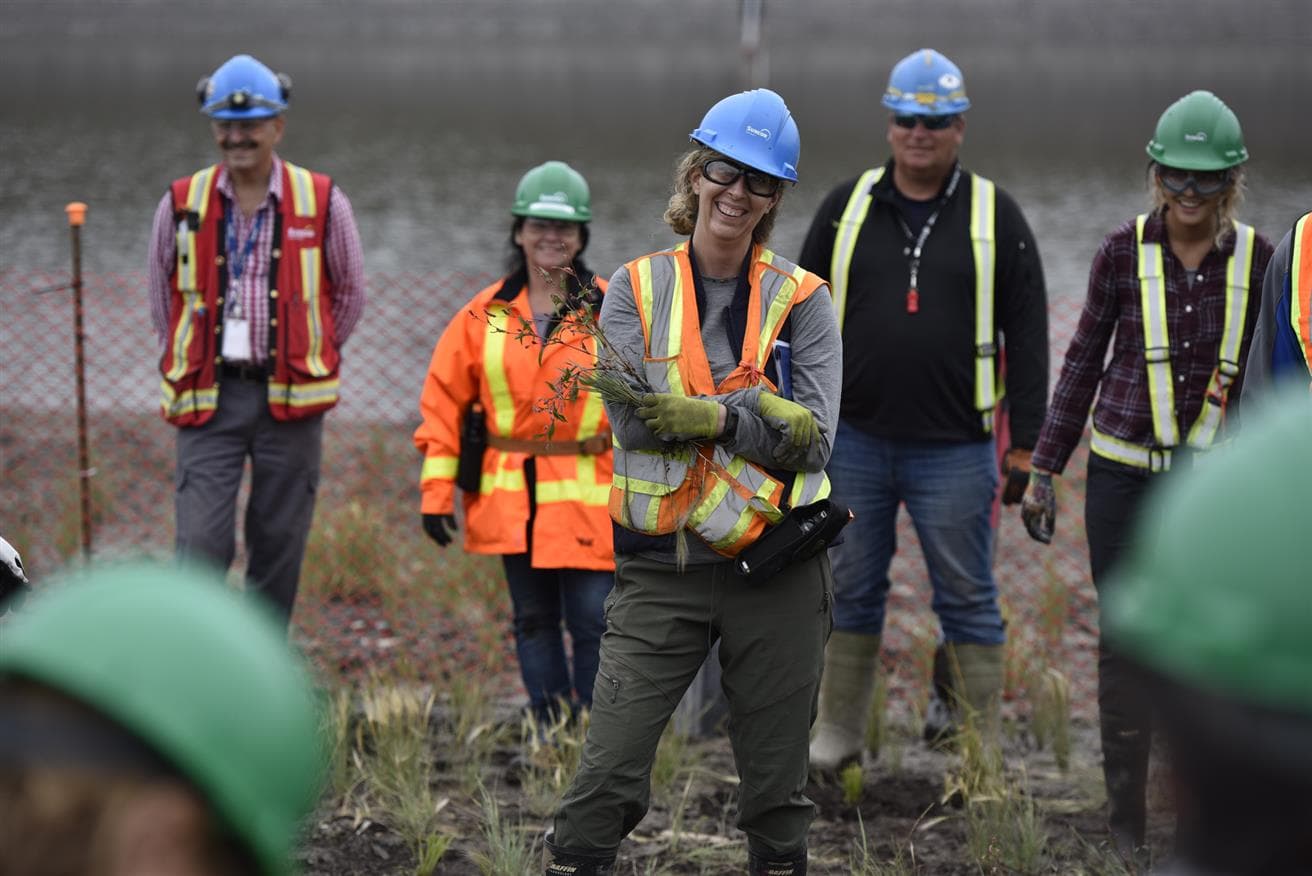In a ‘normal’ year, we’d invite Indigenous community members to tour Lake Miwasin, Suncor’s demonstration pit lake.
Lake Miwasin [me-WA-sin], which means ‘nice/beautiful’ in Cree, is part of our aquatic closure program designed to ensure we can successfully reclaim mine sites. Throughout the project, engagement with Indigenous communities was a major focus for us, even before the construction began in 2017. We invited Elders from a neighbouring community to perform a blessing on the land of the demonstration lake.
Pit lakes are a necessary part of a successful site closure and reclamation and are considered a global best practice in mining industries. There are several pit lakes in Alberta created from former coal mine pits that are now used for recreational fishing and swimming.
Site tours of Lake Miwasin are an ongoing commitment we have with community members. But like many things in 2020, in-person tours went sideways due to COVID-19 restrictions. However, community members got the next best thing when we created a virtual tour video.
“We’re really trying to change the way we engage with the communities on how we do technology development,” says Rodney Guest, director, water and closure. “It’s also an opportunity for Suncor to learn about what the communities would like to see and have in the reclaimed landscape.”
Lake Miwasin intends to use community-led monitoring, which means that community members participate in the monitoring and data collection. This plan is the result of years of listening to and learning from local Indigenous communities.
Green thumbs
Our reclamation team hosted a wetland plant study that involved collaboration with five different Indigenous communities who helped to identify wetland plant species of cultural significance. Years later, these same communities participated in planting in the vegetation at Lake Miwasin.
“There are many vegetation plots you can find at Lake Miwasin,” says Sabrina. All the vegetation seen around the lake was identified by Indigenous community members and either planted or brought in by wind and animals and other natural processes.”
While there are many indicators such as new microorganisms in the lake and animals and birds returning to the Lake Miwasin area that show progress, we continue to learn from our other mining projects to continue to improve our reclamation efforts for the future.




.jpg?mw=304&modified=20210902051631&hash=8514C48F1716E0E88B44C20C50CBB24F)